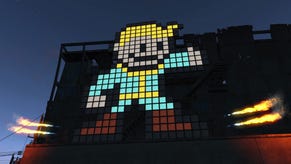Sony explains PS2 shortage
The words "about", "bloody" and "time" come to mind
So the PlayStation 2 has finally hit store shelves in the West, Northern America to be exact, and early reports indicate that a high percentage of the 500,000 unit allocation has been sold without any discernible marketing push from the company. As IGN points out, for an expensive electronic device like the PS2 to sell itself out like this is quite an achievement. But the question still remains, why on earth is the entire West receiving a measely one million units for this Christmas, a quantity that as has been mooted previously, was sold in just one weekend of sale in Japan in March. The disappointing news is, that there is no news. Sony's latest announcement seems to focus once again on the "difficulty of manufacturing" the console in large quantities, and not as has been presupposed elsewhere, on other factors such as memory card shortages or because the company fabricated the whole thing to increase customer interest. So what's the big story? Well apparently it all comes down to that darling of the press announcement, Sony's "Emotion Engine", and more specifically, the graphics synthesizer part of the equation. The chip, which is solely responsible for ensuring you get visuals out of your little black box, was being manufactured by a single plant in Kokubu, Japan, on a 0.25 micron process, at the rate of approximately 400,000 a month optimum yield. Now, this was supposed to change so that SCE Nagasaki Semiconductor would become responsible for the chip and produce it on a 0.18 micron process, allowing for anything up to 1,000,000 per month, which would have fueled the American launch. Due to a gargantuan foul-up, the Nagasaki company's process was a bit of a lame duck, producing nowhere near the optimum yield and forcing Sony to reduce the allocation to 500,000 units, some of which still had to be produced at Kokubu to ensure they met their launch target. This explains Sony's financial figures, released only the other day, which indicated a substantial loss of money through various sources, including the Kokubu balls-up. It still remains unclear whether the graphics synthesizer was manufactured at 0.25 or 0.18 microns, or if there are a mixture of units on sale. As for the rest of the loss, well imagine having to air lift 500,000 PS2s to America because you're running behind schedule. Ouch.








